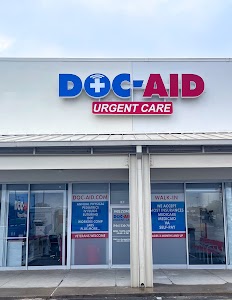When to Go to Urgent Care?

Key Points:
- Urgent care is for non-life-threatening conditions, while emergency care is for conditions that could cause permanent damage or loss of life without immediate treatment.
- Urgent care clinics have set hours, while emergency care is available 24/7.
- A patient is classified as urgent if their condition could develop into an emergency within 24 hours without treatment. Conditions needing stitches, splints, or antibiotics fall into this category. These are serious but not life-threatening conditions requiring prompt attention.
It can be difficult to decide which kind of medical center is the right choice for the treatment of an unexpected illness or injury. It is recommended that you become familiar with the urgent care and emergency care offered in your area, as well as the types of medical conditions they are able to address, to ensure that if the time ever comes, you will know where to go to receive proper medical treatment as soon as possible.
The most common condition causing someone to make a visit to an urgent care clinic is for treatment of a respiratory illness. Many people experiencing respiratory illnesses will seek medical attention to help with their symptoms, which typically include sneezing, coughing, a runny nose, or congestion. Respiratory illnesses include the common cold (also known as an upper respiratory infection), sore throat, bronchitis, the flu, and sinus infections.
Another incredibly common condition that is frequently treated at urgent care clinics is urinary tract infections (UTIs), which cause extreme discomfort and burning during urination, making treatment for the infection necessary before symptoms worsen. Other common infections that are frequently treated at urgent care clinics include ear infections, pink eye, and skin infections. Sprains, strains, and breaks of the ankle, foot, or toe are also very common conditions that are treated regularly at urgent care clinics.
Medical conditions that warrant urgent medical attention involve any sort of symptom that could be causing severe discomfort or could lead to being much more serious, either caused by an infection or illness that needs treatment to avoid worsening, or after a physical trauma such as a bad fall or car accident. The conditions that should be brought to an urgent care clinic for medical attention can involve persistent bleeding, difficulty breathing or shortness of breath, chest pain, coughing or vomiting blood, loss of consciousness, and any severe change in mental status (such as confusion). Essentially, urgent care clinics are intended for cases that are more severe than what you would typically think warrants just a visit to your primary care physician but are less life-threatening than what is treated at an emergency room.
A patient could be classified as urgent if they have a medical condition that, without care within 24 hours, could develop into an emergency situation. This can encompass any condition that needs stitches or splints, labored but still capable breathing, or infections that cause pain or discomfort but can be treated with antibiotics. These are not life-threatening conditions, but they should be treated within 24 hours or sooner than a typical primary care physician would be available to treat the condition. They don’t require emergency care or immediate emergency surgery, but they definitely need medical attention very quickly.
Determining whether your health condition requires medical attention from an urgent care clinic versus emergency care can be tricky. The primary distinguishing factor is the severity of the health condition. If the patient is suffering from something that, without immediate treatment, could cause them to experience permanent damage or loss of life, they should absolutely go straight to emergency care. As well, if they might require emergency surgery to treat their condition, most urgent care clinics are not set up to perform emergency surgeries, so again, that would be best treated at an emergency care clinic. If the condition is more minor and non-life-threatening, urgent care clinics are always the more affordable option and are able to help treat a wide range of conditions that do not require emergency surgery. Many urgent care clinics are also able to offer testing services and prescribe medications if necessary, making them more of a bridge between primary care physicians and emergency care. Additionally, urgent care clinics likely have set hours and are not open for patients 24/7, so if your condition is non-emergent and you can wait for treatment for a few hours, it is a good option. If your medical condition requires immediate attention, emergency care should be available 24/7.
Doc-Aid Urgent Care offers urgent care services through experienced, compassionate physicians led by Dr. Monica Saenz, MD, and a competent medical staff, serving Laredo, Hebbronville, Zapata, Carrizo Springs, Cotulla, Eagle Pass, and all of Texas via Urgent Care Telehealth, and a convenient clinic locations in Monarch Drive Laredo, TX, E. Saunders Laredo, TX, S. Zapata Hwy Laredo, TX, Weslaco, TX, Pharr, TX. Schedule an appointment online or contact us for more information.




